Conveyor Belt Thickness Gauging
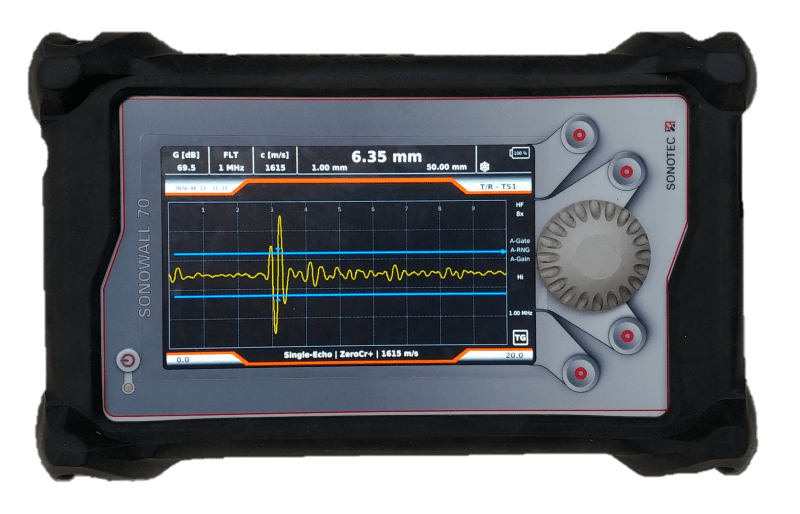
Sonowall 70 Thickness Gauge
The Sonowall 70 is a thickness gauge ideal for conveyor belt thickness measurements. There are several features especially useful for conveyor belt testing. These include a visible gate, bright display and the ability to adjust the frequency if needed. Your existing probes can also be set up on the Sonowall 70 including single crystal probes.
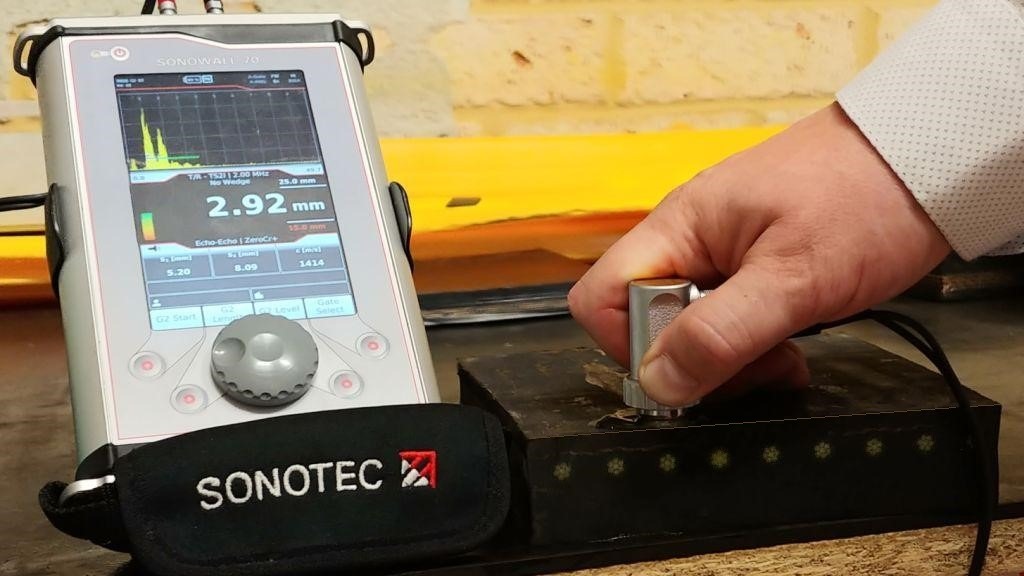
Conveyor Belt Thickness Gauging
The attenuation of the sound in rubber is quite high. Other factors contributing to the difficulties in measuring the top or bottom covers of conveyor belts. These include laminations, accurate calibration, rubber temperature. Given these difficulties the choice of probe is important. A low frequency dual crystal probe is normally the best balance of penetration, resolution and near surface measurement capabilities.
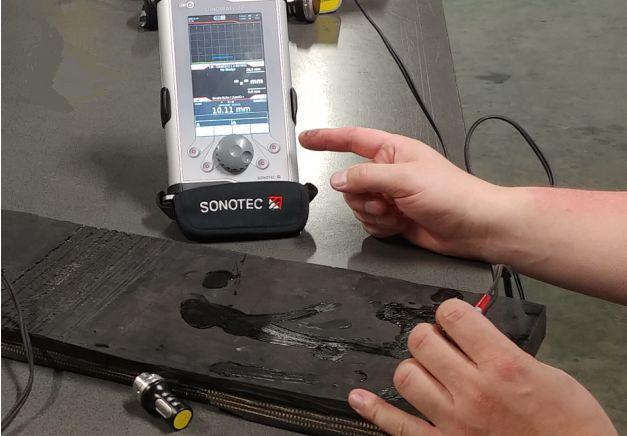
Fabric Lined Belts
Fabric lined belts present a unique challenges. The fabric liner itself may not be consistent in its position so is not ideal for calibration.
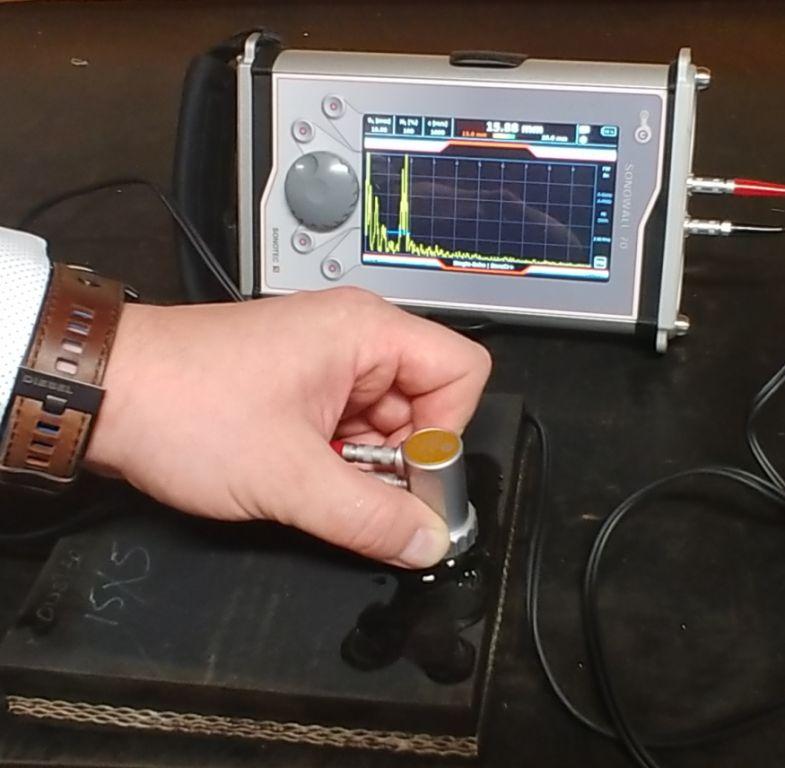
Landscape Display
The Sonowall 70 is mostly used in portrait display mode but it can be flipped to landscape mode automatically.
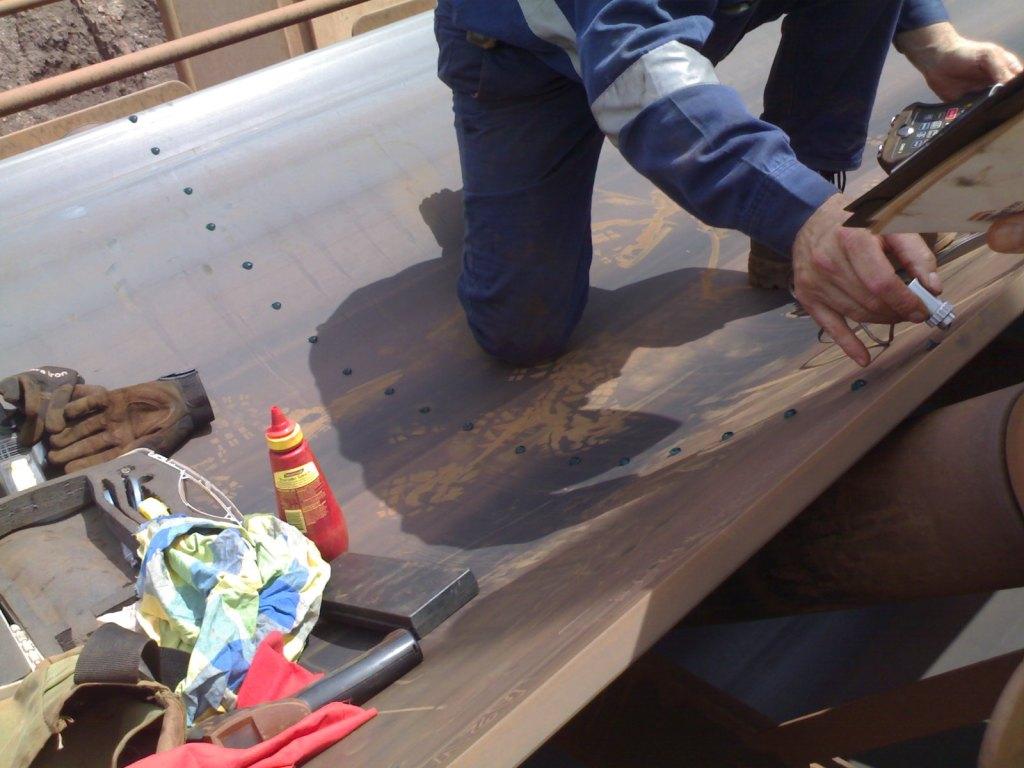
Conveyor Belt Thickness Gauging
Typical measurement points across the conveyor belts.

Cord Reading
The above image shows the probe above the cord and the corresponding reading on the A-scan display.
Conveyor Belt Reporting
Trend information is important for repairs and replacement planning so thickness readings on the top and bottom covers is often graphed to show the wear rates over time and also the wear rates across the belt at a specific location. This information is necessary since the wear rate across the belts is often uneven. Report examples are shown here.
It is also possible to show the profile of the belt in a B-scan format. B-scan is different from spot readings. The data is collected at a much higher sampling rate so graphing the data gives the impression of a continuous scan across the belt. It often highlights subtle changes not readily apparent with spot readings. See example here.
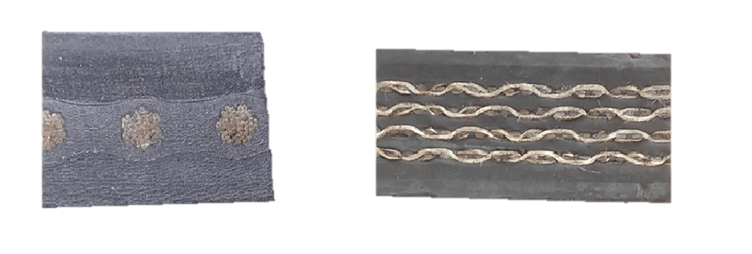
There are several factors contributing to variations in conveyor belt thickness readings. One of these factors is belt construction. There are two main types of conveyor belt. The above photos show a steel cord belt (left) and a fabric layered belt (right). The uneven surface of their respective inner layers can affect the thickness readings even if the same reading is repeated. Care is required to be sure of the correct reading.
